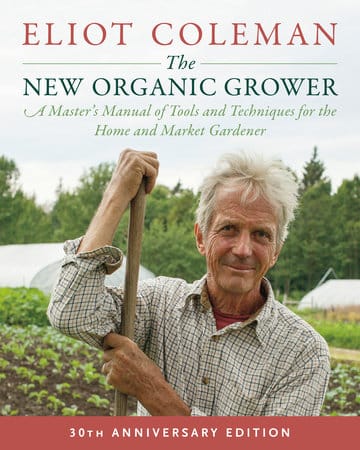October Garden Planning: 10 Tips for Success

Just because fall is here, that doesn’t mean gardening season is over! There’s still plenty of time to wrap up the season, prepare for next year, and tackle all of those pesky to-dos around the homestead. So without further ado, here’s your October garden planning cheat sheet.
October Garden Planning: The Harvest
1. Pumpkins and winter squash: If you haven’t already, now is the time to harvest your pumpkins and winter squash. You’ll know they’re ready when the stems start to split apart. Use pruning shears to cut the fruits from the vine leaving about two inches of stem on the fruit. This will help prevent premature rotting of your harvest.

2. Root crops: Potatoes, beets, parsnips, carrots, and turnips are also ready for a final harvest in October. Gently dig up your root crops, brush them clean of dirt and debris, and put them in storage in a cool, dark place with low humidity.
3. Herbs: There’s nothing better than having fresh herbs available in the winter months (they are the perfect addition to a steaming pot of stick-to-your-belly stew!) so don’t neglect to harvest the last of your bounty. You can dry or freeze the herbs so they are ready to go when you need them.
Planting in October
4. Spring bulbs: Get your spring bulbs in the ground now so the roots have time to spread out before the soil freezes. Choose hardy varieties like daffodils, tulips, hyacinth, snowdrop, and crocus corms.

5. Fall garlic: Mid-autumn is the perfect time to plant garlic for summer harvesting. Be sure to choose a sunny location with rich soil – garlic thrives best in this setting. Plant cloves in rows, root-side down about 5” apart. If you’re in Zones 4 or 5 like we are, cover your crop with about 6” of mulch for protection.
6. Trees and shrubs: If you missed out on planting trees and shrubs last spring, don’t worry! Fall is the perfect time as it allows the root systems to form before the frost sets in. Spread mulch around the saplings to help them survive throughout the winter. And don’t forget to water (snow level-pending, of course) to keep them hydrated through the winter months.
Garden Maintenance
7. Reflect and record: Now that the harvest work is done, it’s time to look back at the year and record how things went. If you don’t already have an outline of your garden layout, make one! This will help for planning purposes next year so you can rotate crop and change the layout based on what worked or didn’t work, and it also provides a historic log to review in the future. Now’s also a good time to make notes about any challenges you faced, the changes you want to make next year, and any pressing items you should remember in the spring.

9. Test your soil: As we all know, the health of our soil is integral to the success of our gardens. As the season comes to an end, test your soil to see if you need to make adjustments to the pH. If you do, add the required amendments now as they will take some time to begin working.
10. Pack up and spruce up: Instead of just packing everything away for the winter, spend some time organizing your tools. See what needs to be mended or replaced, do a deep clean to prevent rust or aging, and organize so you can quickly find what you’re looking for. It’s also a good time to fix any broken fences, doors, cellars, etc.
Recommended Reads
Recent Articles
Aside from the sheer pleasure of telling your friends, straight-faced, that you maintain your garden using something called a “chicken tractor,” there are a slew of other benefits to working the land with a few of your animal friends. Getting rid of pests without chemicals, for one; letting them do the work of weeding and…
Read MoreIf the idea of running a vegetable farm sounds daunting, you’re not alone. What can you do to simplify techniques and reduce expenses? Where do you even begin?
Read MoreWhen you’re walking around the grocery store looking at the vegetables, it’s probably hard to imagine that a century ago there was twice the amount of options.
Read MoreIf you love tomatoes, you probably already know just how many varieties of these summertime staples there are. But do you know what makes each one unique?
Read MoreAdding the long game of trees to your system results in a deeper and more reliable, resilient and profound presence to your annual vegetable production.
Read More







